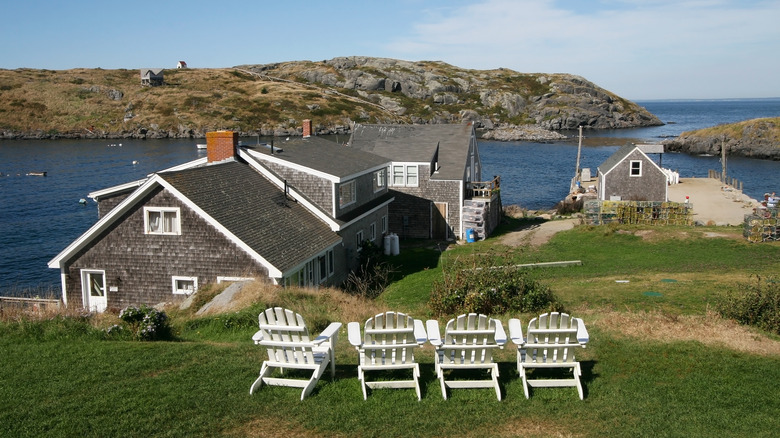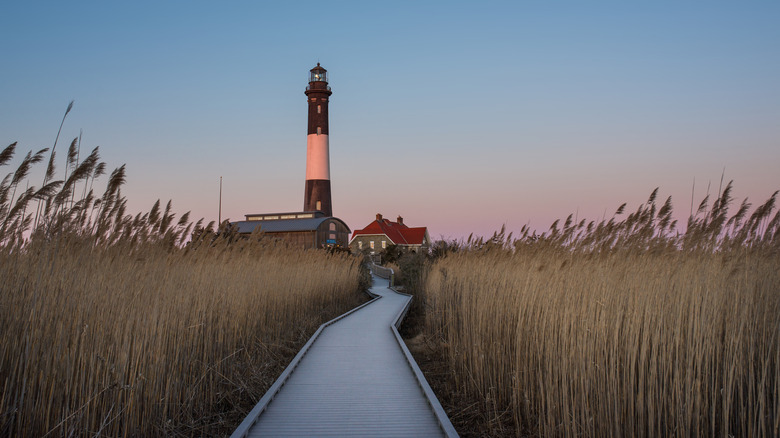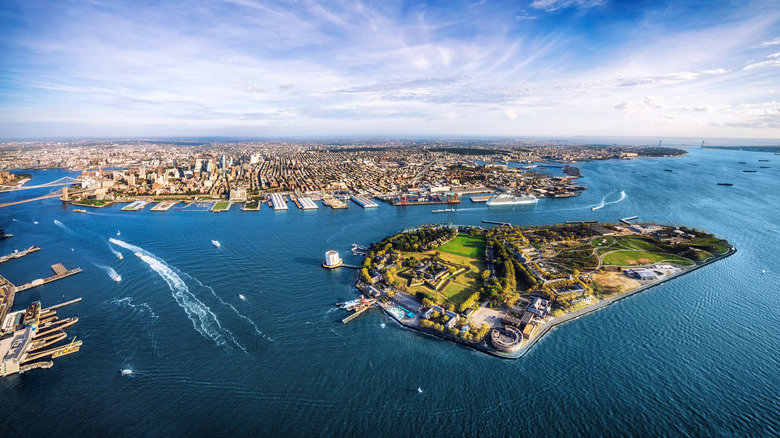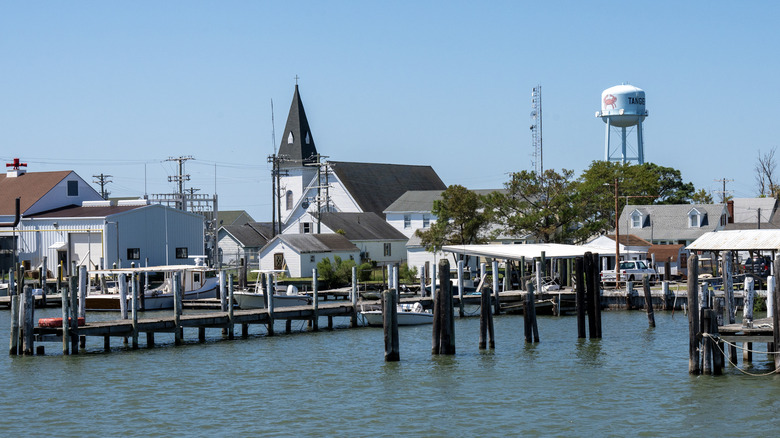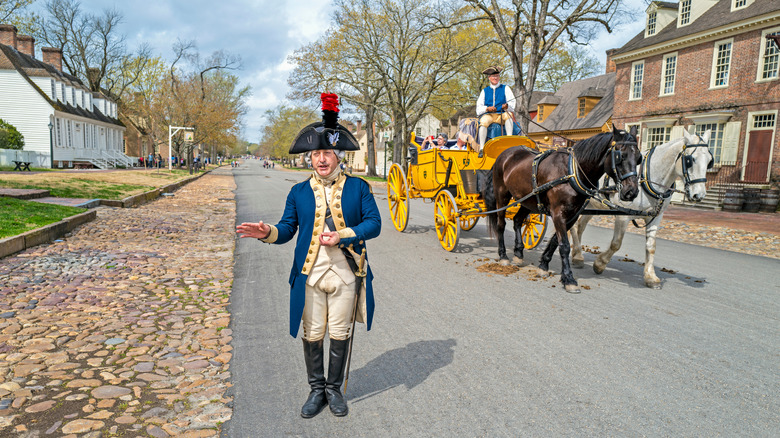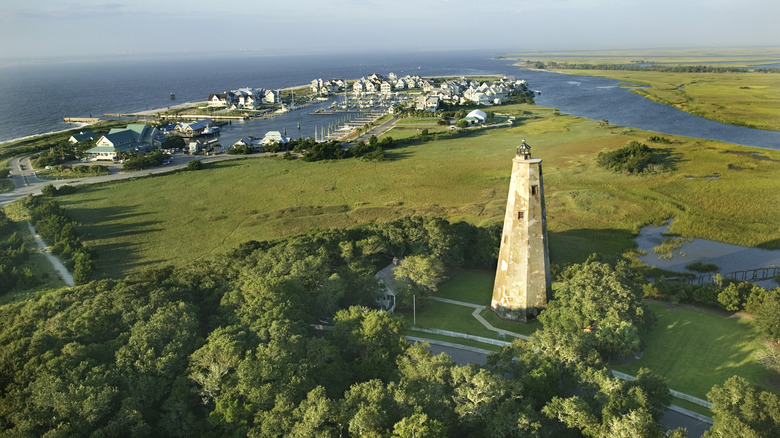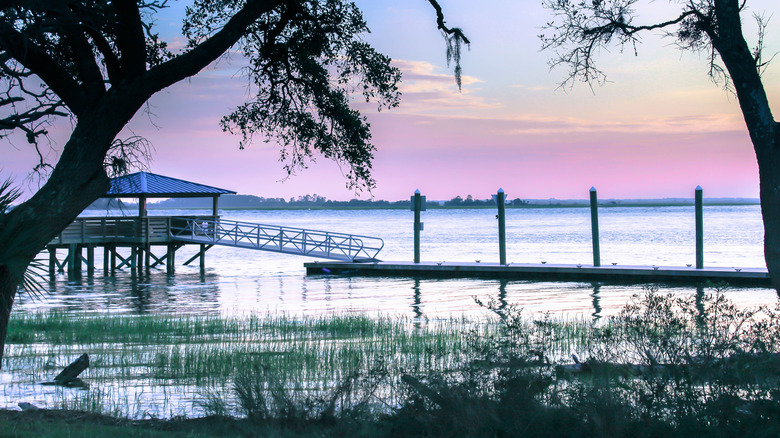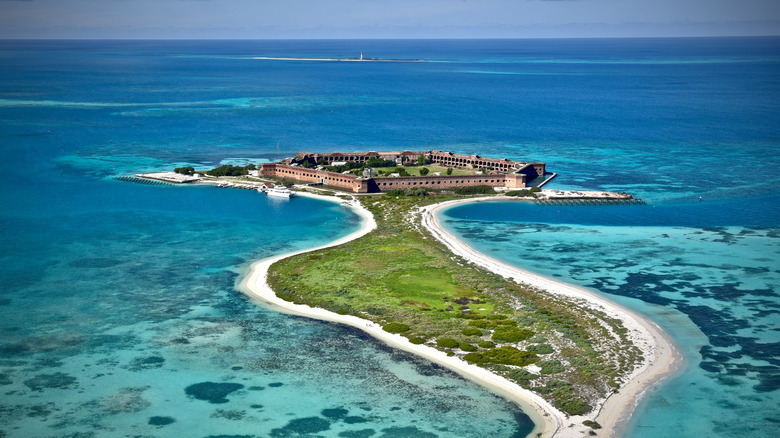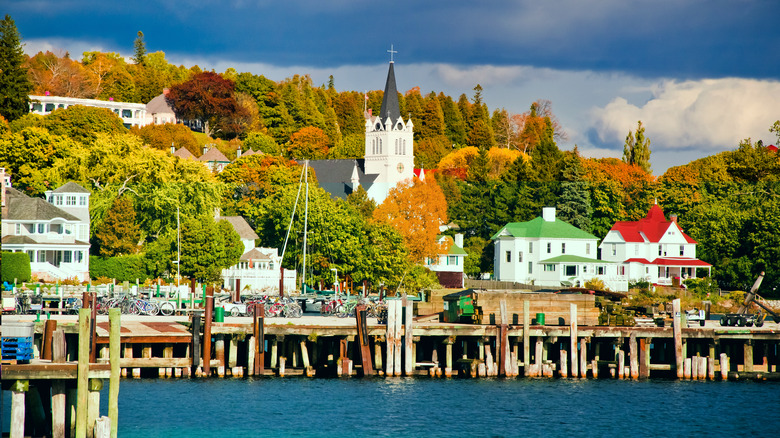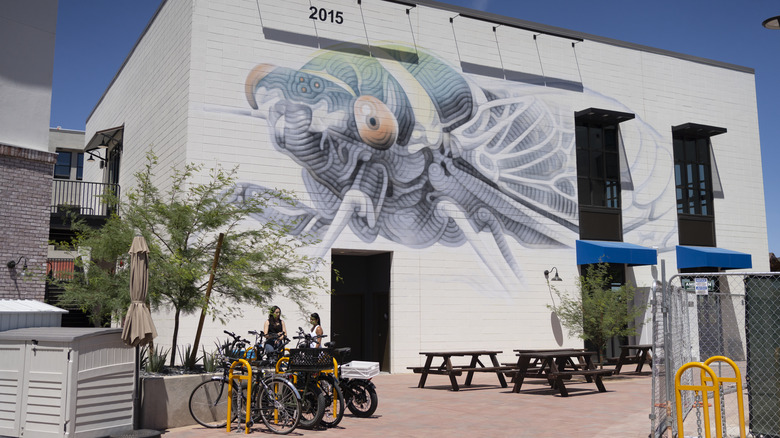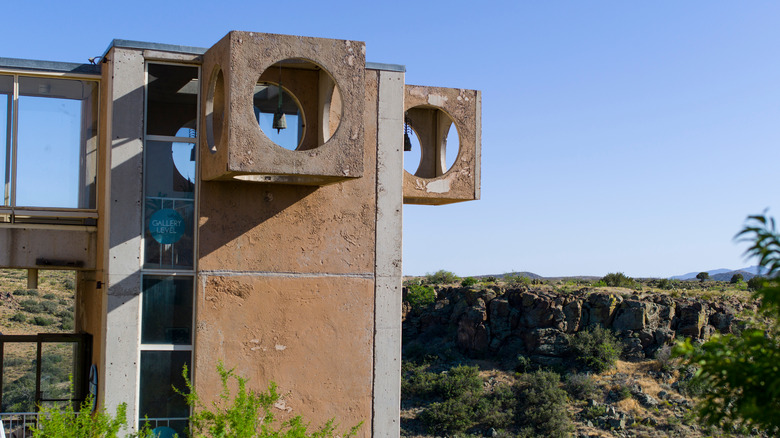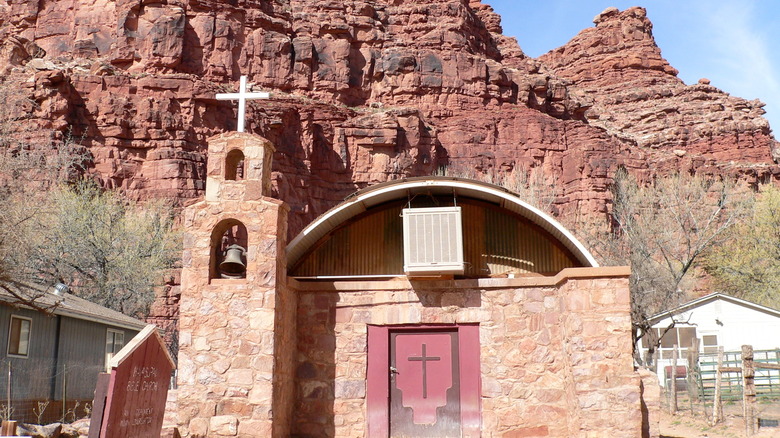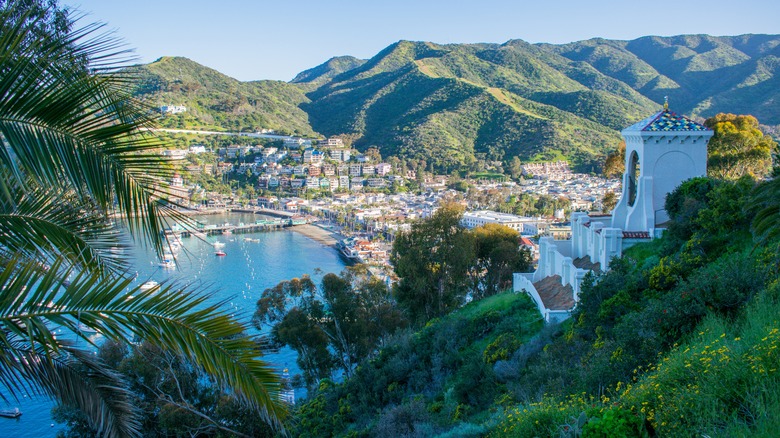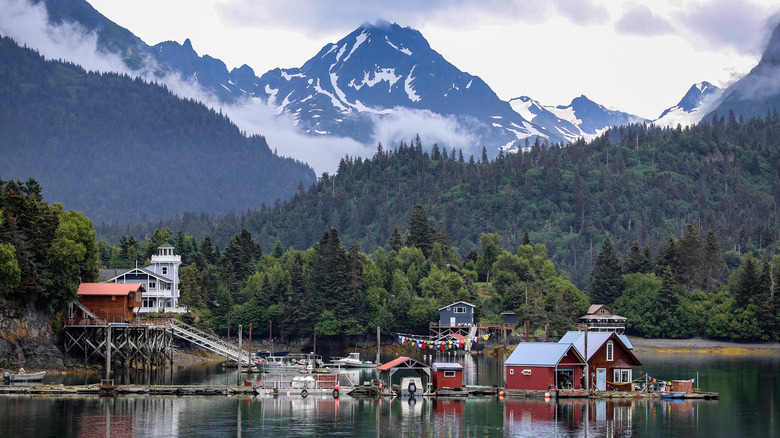14 Places In The US Where Cars Are Not Allowed
Driving a car on vacation can be fun — until, suddenly, it isn't. The rental service misplaces your reservation. Expected features cost extra. The navigation app loses its signal. Traffic, construction, and closures frustrate your path, all on unfamiliar roadways. Even when you budget for tolls and parking, the threats of fender-benders and flat tires loom large. Through it all, isn't someone required to moan from the back seat: "Are we there yet?"
Take heart: Even in the U.S., you don't have to drive a car to enjoy a satisfying vacation. Yes, Americans are used to driving everywhere, and most of our country is designed around the automobile. Walking can still be a nail-biting experience, especially in the most dangerous U.S. cities for pedestrians. However, many places are striving to make their centers more "walkable" (and accessible). In the 2023 fiscal year, Amtrak serviced nearly 29 million rides and invested $3 billion in rail infrastructure. Most compelling, certain destinations are promoting themselves as "car-free." These aren't just places where driving is inconvenient or discouraged, like New York or Provincetown; it's truly impossible to drive when you get to these locales, and many of them can't even be reached by car.
If you're feeling road-weary and are looking for a car-light vacation, put your vehicle in "park" and try one of these offbeat locations. Some are challenging to get to, and a good number of them are actual islands. But they're great places to stretch your legs, and you can freely explore them without "looking both ways."
Monhegan, Maine
If you close your eyes and picture Maine, you likely imagine a destination resembling Monhegan. Rocky shores rise from a steel-colored harbor. Mossy grass surrounds cape-style houses with clapboard walls. Fishing boats sit in the riffled water, and you'll find a pebbled beach named, well, "Pebble Beach." Even the Monhegan lighthouse is picture-perfect, with an enormous old bell displayed nearby. With so much gorgeous scenery, you might walk around this island village for an hour before thinking, "Wait a minute. Where are all the cars?"
The absence of automobiles distinguishes Monhegan from the hundreds of similar towns along Maine's iconic coastline. You can only access the island by ferry, and most roads are unpaved. While you will likely spot a truck or golf cart, you'll have to park your own car at the mainland dock and get around on foot. The town is best known for its seafood eateries and arts-and-crafts shops, and overnighters can pick from several inns and cottages.
Fire Island, New York
Fire Island is a long strip of land that parallels the southern coast of Long Island, and visitors are sometimes surprised that it extends a full 32 miles. This barrier island is best known for its endless beaches, a 168-foot-tall lighthouse, and a legendary LGBTQ scene. You can easily drive to the island over the Robert Moses Causeway, named after the preeminent American highway builder. However, before summer travelers arrive at the villages of Ocean Beach or Saltaire, they have to park and start walking. Both locations, as well as the National Seashore, are car-free in the high season.
Fortunately, these towns are basically flat and pedestrian-friendly, and there are plenty of places to find a beach cruiser. The beaches are best known for their easygoing atmosphere and as an ideal location for hiking and paddling. Come nightfall, the atmosphere gets lively at the island's 17 resort communities — and there is no need for a designated driver.
Governor's Island, New York
New York City is a metropolis made of islands, and names like Ellis Island, Staten Island, and Long Island are famous worldwide. The lesser-known Governors Island is a peculiar, arrowhead-shaped land mass just 800 yards south of Manhattan, within easy view of the Statue of Liberty. You'll find historic buildings on these 172 acres, along with manicured parkland and one hill rising about 70 feet above sea level. You can also explore Fort Jay, an 18th-century stronghold that once defended the harbor from naval assault. While Governors Island is surrounded by boroughs teeming with millions of people, the island's total population is zero.
The shores are reachable by ferry, and visitors can roam the grounds on foot or bicycle. Paths interlace throughout the gardens and terraces, giving you the sense that the island is one giant park. Concerts and art festivals are regular events, drawing thousands of people from the mainland. A visit can be a nice bonus for your perfect New York City holiday trip. Want to stay the night? Collective Retreats offers a glamping option with luxury tents and dining.
Tangier Island, Virginia
More than 700 people live in the "soft crab capital" of Tangier, a cluster of low-lying islands technically part of Virginia. Tangier is about 12 miles from the nearest mainland, but it's not out in the Atlantic Ocean; the islands lie in the middle of the Chesapeake Bay, south of Delaware and Washington, D.C. Nevertheless, you'll need to take a boat or aircraft to reach Tangier, and not even the locals have cars. Many people in town are handy with watercraft; you can also get around on foot or by bicycle.
Unlike many islands, which have become gentrified with tourism, Tangier retains its working-class roots, and crabbing remains a serious industry. The wetlands are rich with wildlife, and the town has its share of stores, but the inns remain homey and modest, and you won't find endless rows of souvenir shops. Enjoy simple pleasures like an ice cream cone and a stroll along the unspoiled beaches in the summer.
Colonial Williamsburg, Virginia
If you traveled back in time to the early 1700s, this little slice of Williamsburg, Virginia, would look very much the same. Sure, the roads are better paved now, and visitors wouldn't be taking photos of passersby with their smartphones, but you would still see rows of Georgian houses with elegant mullioned windows. Many of the walkways might be paved with the same cobblestones, and you would spot horse-drawn carriages and men in feathered tricorn hats. Colonial Williamsburg is a living history museum where actors in the street speak old-fashioned English and regale tourists with stories of the town's distant past.
There are also no cars. This section of Williamsburg has perfectly drivable streets, but they are accessible only to shoes and hoofs to preserve the neighborhood's vintage atmosphere. The area is also free of electrical lines and telephone poles, and scheduled re-enactments will transport you to historical moments, such as a trial in the courthouse or a flintlock musket demonstration. You can also experience tours of the houses or stroll through 30 distinct gardens.
Bald Head Island, North Carolina
If there's any doubt that Bald Head Island is quirky, consider its monthly "Howl at the Moon" event: This communal dinner brings locals and vacationers together for food, libations, and bagpipes near a bonfire. The only catch is you have to walk there. Once visitors step onto the ferry to Bald Head Island, they must leave their cars behind and enjoy this North Carolinian enclave's tranquil, pedestrian pace. Bald Head is also home to the Badwater Cape Ultramarathon, which sees participants running 50 miles around the small island.
Not quite 300 people live in this secluded community, and most of the island consists of level grassland, light forest, and 14 miles of quiet beachfront. Near the western shore stands the "Old Baldy" lighthouse, a weatherbeaten tower that rises handsomely over the park below. If you're looking for lodging, Bald Head is full of inns and rental properties, although they do get competitive in the high season.
Daufuskie Island, South Carolina
On a map, Daufuskie barely looks like an island, as it blends into the reedy coast of South Carolina, just a short distance from Savannah, Georgia. Nevertheless, Daufuskie is an island which can only be reached by boat. This near-but-far isolation has shaped the area's history: Untold numbers of enslaved people escaped to the island as refugees, forming the unique population known as the "Gullah." The Gullah cultivated their own creole language and cultural identity, largely subsisting off the wetlands known regionally as the Lowcountry. Visitors can follow the Gullah History Trail, which is dotted with significant landmarks.
Daufuskie is home to about 400 people and a busy marina. Visitors can sample local eateries, the Daufuskie Island Distillery and the 140-year-old Silver Dew Winery. Unlike the more active island of Hilton Head, Daufuskie is light on lodgings, so you'll want to investigate rental properties in advance. But this island is the only place in the area that doesn't allow cars, so you can roam its 9.6 square miles carefree.
Dry Tortugas, Florida
Seventy miles from Key West lies the Dry Tortugas National Park, a tiny archipelago in the vast blue Caribbean Sea. These are the kinds of remote coral islands that pirate sagas were made for, with pristine beaches and crystal-clear waters. Fort Jefferson, a hexagonal stronghold positioned just west of Bush Key, is the only major settlement. If you wander the grassy shores and feel like you're far from civilization, your instincts are right: The Dry Tortugas technically belong to the state of Florida, but they're nearly as close to Cuba and only accessible by boat or seaplane.
There are no real roads here, but visitors can't travel far by land. The Dry Tortugas are most famous for the historical fort and the abundant marine life inhabiting the surrounding waters. This is a popular destination for amateur ornithologists, thanks to a range of seabirds, as well as snorkelers and scuba divers, who can find sea turtles and other majestic creatures in the surrounding shoals. You can set up camp at one of the islands' primitive sites; just make sure to bring all your own supplies, including fresh water. While you're in the area, the Dry Tortugas is just one of the best state parks to visit in Florida.
Mackinac Island, Michigan
At the very tippy-top of Michigan, just a stone's throw from the Canadian shore stands the pastoral island of Mackinac. This land mass is tiny — just over a mile long — but somehow, it packs in nearly 500 residents. More than a million tourists make their way to this Great Lakes oasis every year, where they eat at an impressive range of restaurants, ride in horse-drawn carriages down Main Street, and tour the well-preserved walls and barracks of Fort Mackinac. For such a geographical speck, this island has many places to stay, including luxury condos on Main Street and bed-and-breakfasts with water views.
Instead of driving, visitors can rent a bicycle and easily ride around the island, exploring its startling number of nooks and crannies. Sailing and kayaking are also favorite pastimes during the warmer months. In winter, street hockey takes up a whole new meaning when players throw on their gear and face off in the car-free streets.
Culdesac, Arizona
Culdesac is a housing development in Tempe, Arizona, which might not sound like much of a destination — except that Culdesac is the only place on this list designed to be car-free. The 17-acre property behaves like its own little village, with high rises made to resemble traditional adobe structures. The buildings are clustered closely together to maximize shade, and there are more than 1,000 designated bicycle parking spots. Culdesac flanks a light rail station, which connects directly to Sky Harbor International Airport; theoretically, you could step off a plane, ride the train there, and never trifle with so much as a taxi.
What is there to do at Culdesac? The development is still in its early phases, and more residences have yet to be constructed. The location will appeal primarily to new urbanists who want to see a planned, car-free environment in real life. But visitors are welcome to roam the pedestrian-friendly streets, hang out in the plazas, and grab a meal at the first on-site restaurant, Cocina Chiwas. The weather is also perfect for a stroll, as long as you don't come in the scorching summer.
Arcosanti, Arizona
You can't really pigeonhole Arcosanti, the experimental arts community in Arizona's high desert. The campus comprises brutalist concrete structures, which tie together in a maze of domes, blocks, and bridges. Southwestern flora grows everywhere, from leafy bushes to rows of pointy Cyprus trees. Blend these two, and you get an arcology prototype, a concept that fuses architecture with ecology. This high-minded concept sprang from the mind of Paolo Soleri, an Italian architect who spearheaded Arcosanti in the 1970s.
You can visit Arcosanti just about any time, tour the greenhouses, hike the surrounding trails, and even stay the night in unique guest rooms. Most visitors drive the 70 miles from Phoenix, and there is a parking lot, but beyond that, the "town" is car-free. Drop into the high-ceilinged cafe for a beverage or locally sourced meal, then maybe stay for an agricultural workshop. On-site artisans also create bronze and ceramic wind bells and bowls, which you can purchase as souvenirs to support the Cosanti Foundation.
Supai, Arizona
When travelers discover that Supai is located in the Grand Canyon, they sometimes wonder whether they heard or read that right. But yes, this census-designated place is nestled between the walls of America's most colossal gorge, and more than 200 people call the remote little village home. There are no motorways, nor could a car possibly reach the town. The way to Supai is so steep that the postal service still delivers mail on the back of a mule. Around the village rise rust-colored cliffs, and nearby tumble the waters of Havasu Falls, one of the most spectacular waterfalls in the region.
Note that Supai is part of the Havasupai tribal community, and it is not considered part of Grand Canyon National Park, so visitors need a special permit to visit. While you will need to hike along a challenging 8-mile trail to reach Supai, thousands of tourists make this journey every year. There's also a campground, so once you've made the journey on foot, you're welcome to set up a tent.
Santa Catalina Island, California
Santa Catalina Island is only about 20 miles off the coast of Los Angeles, but its personality can feel like the complete opposite of the bustling metropolis. The corrugated hills are mainly green and undeveloped. The main town of Avalon is small and dense, like a misplaced Mediterranean paradise. Instead of the endless multilane highways that dominate Southern California, Santa Catalina has only a handful of twisting roads, and tourists are strictly forbidden from driving them. The island is full of walkways, and the weather is mostly sunny and warm year-round. Many residents get around in golf carts, and there are bicycles aplenty — although you will have to contend with some serious slopes.
For outdoorsy visitors, Santa Catalina is replete with hiking trails, zip-lining, and organized wildlife expeditions. It boasts a popular casino and an excellent dining scene if you'd prefer to stay in town. What is the one aspect it does have in common with L.A.? Once you step off the hour-long ferry, you may spot a celebrity.
Halibut Cove, Alaska
The snow-streaked mountains around Halibut Cove, a must-see for Alaska newcomers, look like they emerged from a Bob Ross painting, as do the rolling pine forests and reflective waters of Kachemak Bay. When the fog lifts and the views emerge, it's hard for visitors to believe that such an epic landscape could exist. Yet about 200 people live at least part-time in this remote Alaskan town, where the major pastimes are fishing, hiking, and creating artwork. The area is named after its abundant flatfish, and its reputation for outdoor adventure has grown exponentially in recent years.
Halibut Cove has no motorways, and like many places in rural Alaska, you can only reach this isolated community by boat or pontoon plane. Some of the main draws include Grewingk Glacier, to which visitors can easily hike, and thousands of seabirds, such as kittiwakes and puffins. Come nightfall, the town has a range of lodges and cabins.

